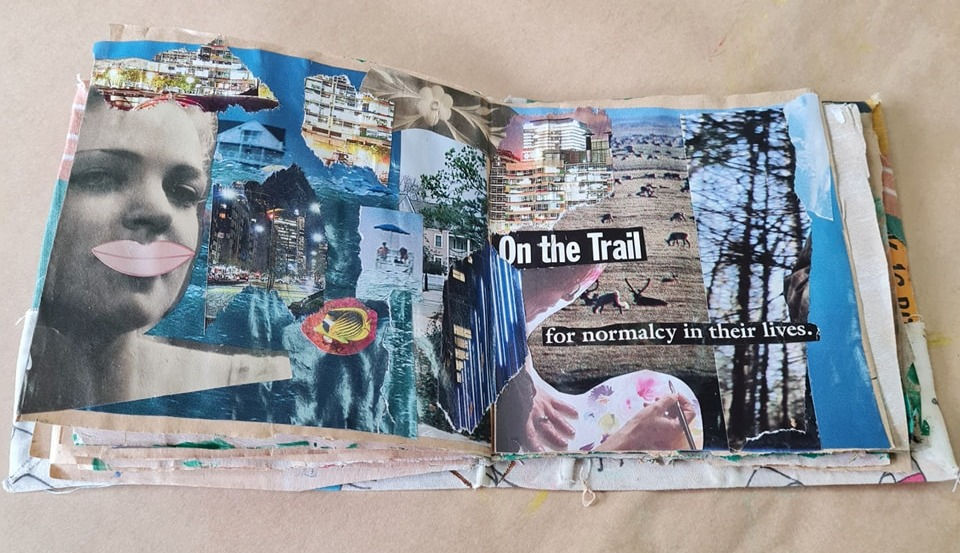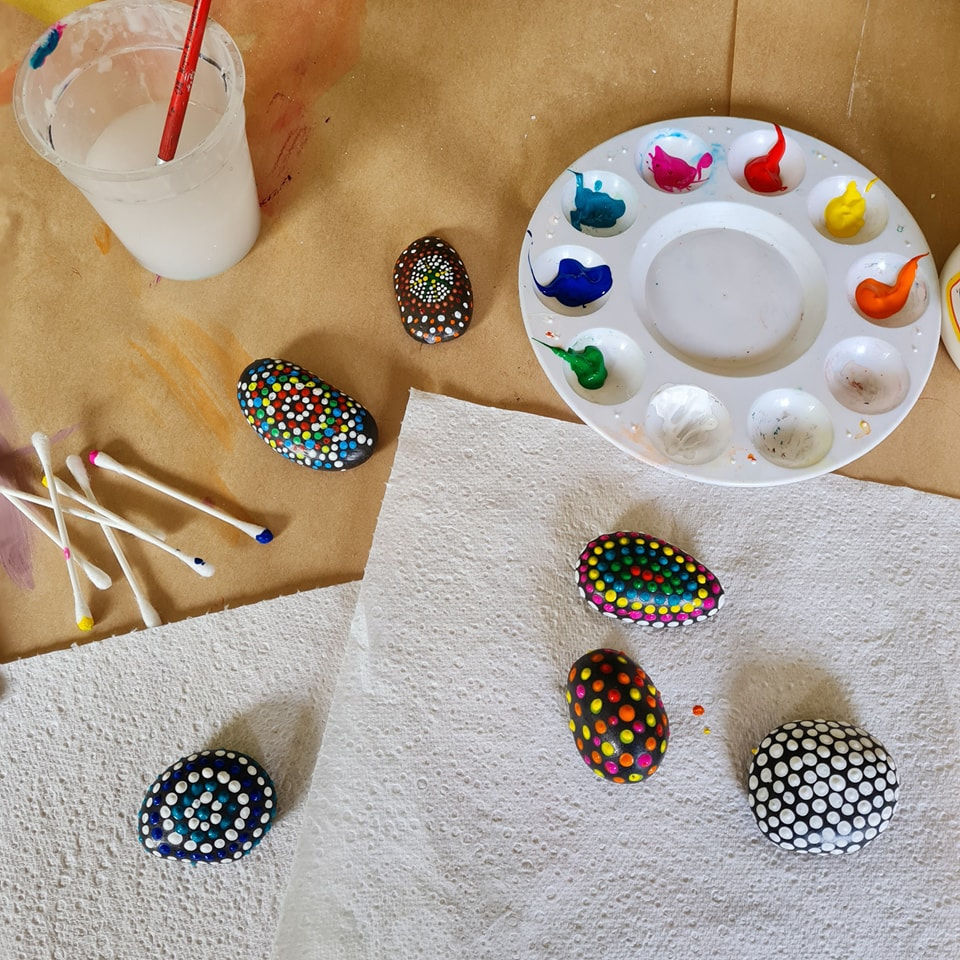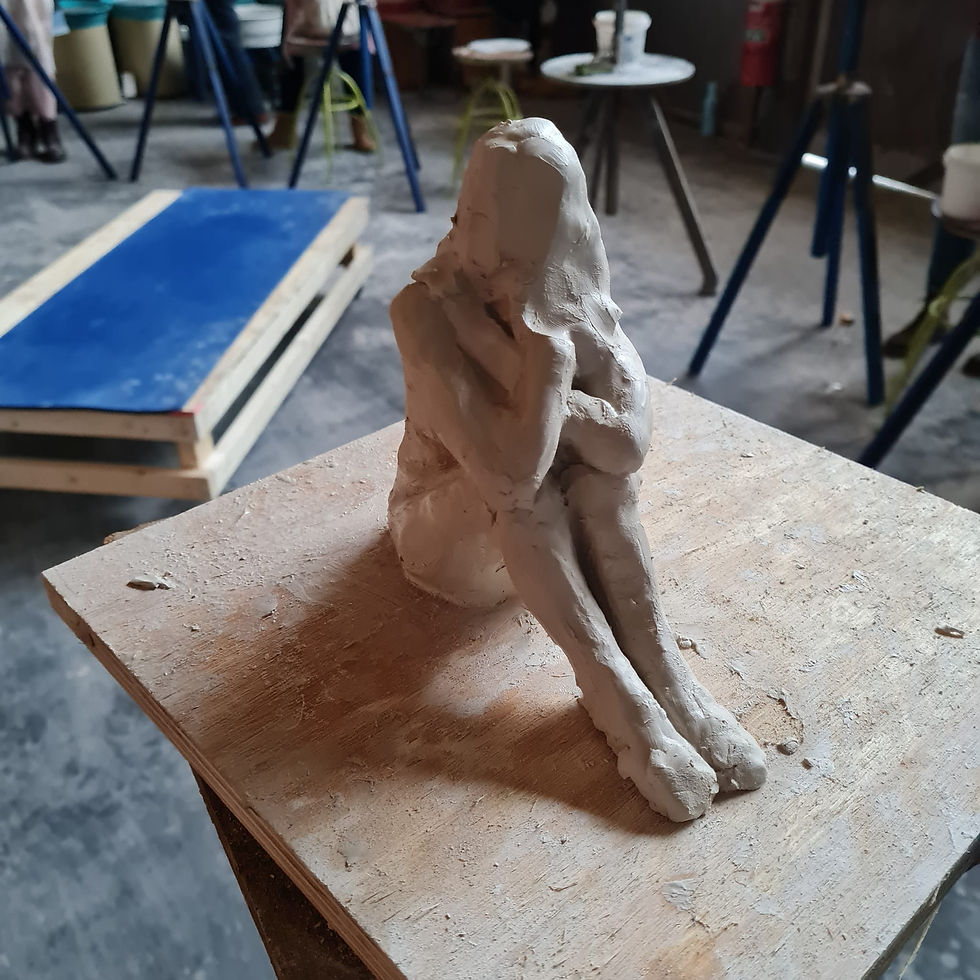Participation in the arts comes in many forms. This blog shall attempt to explore some of the differences between Art Therapy, “art-as-therapy” and art classes and better define what Art Therapy is. My aim is not intended to promote one over the other; instead, I believe that each form holds a unique and significant place within our community, offering its own set of benefits. By helping to clearly communicate what is different about these forms of arts engagement, we can provide valuable guidance, helping individuals understand which form of best suits their needs.
As a practicing Art Therapist, I have come across a lot of confusion and debate about what should and shouldn't get the title "Art Therapy". Online there are stores selling colouring-in books titled "Art Therapy", artists on social media who are technically trained and making artwork as self-help calling it "art therapy", some art teachers or other professionals running relaxed art classes calling it "art therapy". Whilst any form of engagement with the arts can be healing or have therapeutic benefits, it should not all be classified as "Art Therapy".
Art Therapy

Art Therapy is a discipline and a practice, it has developed alongside the fields of psychiatry and psychotherapy. Art Therapy has been used as therapy for patients with various health conditions from at least the mid to late 1900s when Art Therapist associations formed in Britan, America and Australia. The origins and history of Art Therapy is still debated and being explored.
Art Therapists must complete a tertiary level program of training, which includes a placement in a clinical setting as a student Art Therapist. My Art Therapist Masters training involved learning about the field of psychotherapy, learning about clients’ needs in therapy, understanding the creative process and how it helps us to express emotions, how to apply counselling skills and different psychotherapy approaches to Art Therapy to support clients to strengthen their mental health and reduce distress.
Further, once an Art Therapist graduates and becomes registered with a major psychotherapy, counselling or art therapy association, they must regularly engage in ongoing training and supervision in areas relating to their client's needs. This may include training in other therapy approaches and interventions which are also used by other psychotherapist professionals.
Art as Therapy

"Art as Therapy" is a term used within Art Therapist training to explain a way of engaging in creating art to support general health or enjoyment, which does not involve a counselling or psychotherapy process and is not as technically demanding as a formal art class. Art-as-therapy may involve being shown how to create a finish art piece or craft work, but there is in general less emphasis on mastering a set of technical artistic skills. The goals usually are engaging in an activity to support relaxation and improving mood and ending up with an achieved artwork, helping the person feel accomplished.
In contrast, Art Therapy does not emphasise creating a finished artwork and instead focuses on the creative process, during the use of art materials, to express and work through emotional challenges. Art Therapists may at times use an art-as-therapy approach with their individual clients if they feel this will be of benefit within the client-therapist relationship. Art Therapists may also run groups with an art-as-therapy approach when this is in the best interest of the group. However, technically any type of professional within a health or community service who has some creative skills could run an art-as-therapy program which encourages clients to make something for personal enjoyment.
Art Class

An art class again is not the same as the core of what Art Therapy is about. An art class is facilitated by an art teacher or an artist facilitator who demonstrates or teaches how to use art materials. The goal of art classes is generally to strengthen one’s technical abilities when it comes to making "artworks" or using a particular art medium.
In my personal experience of attending many art classes, whilst a lot of art classes and courses will focus purely on technical improvement, artists and art teachers do understand the power of the arts for self-help and self-expression. They may encourage creating artworks which are expressive, or it may be a part of a school's art subject curriculum to learn how to use art to convey a message. Art classes can help people to master an art form or artistically communicate a message, and the social elements of an art class and engagement in trying to master a creative skill may support mental health. However, an art class is not the same as a therapy session with a trained therapist.
On occasions, I have seen artists and art facilities run classes labelled “Art Therapy” without having Arts Therapy or counselling training. To me this is disappointing, yet I acknowledge it likely comes from a good intention to create a space focused on personal enjoyment rather than technical skill. I feel it is accurate and ethical to advertise these types of art classes and events as 'art as therapy.' This would help set the right expectations with community and build trust in our practices.
Furthermore, it's important for our community to understand that registered Art Therapists, who practice Art Therapy, are skilled in managing risks associated with working with distressed individuals, including those with mental health issues or trauma histories. Art Therapists are members of ANZACATA or other major psychotherapist associations like PACFA, and ACA, adhering to strict ethics and conduct codes. They work to protect their clients and ensure therapy is beneficial. While art classes can be valuable for individual and community health, they do not offer the same personal exploration of emotions and do not have the same Art Therapist ethical requirements such as protecting confidentiality, protecting the best interests of the clients, meeting training standards and safeguarding against risks and therefore should not be named as Art Therapy.
To summarise, all of these forms of engaging in the arts add value and have a role within our communities. Research is showing that doing things with our hands is important for easing depression and supporting mental health, a topic apparently explored in this book written by a Neuroscientist (which is on my reading list). The World Health Organisation in 2019 also published a report on over 3000 peer reviewed studies, mostly from the field of Arts Therapy, saying this report had "identified a major role for the arts in the prevention of ill health, promotion of health, and management and treatment of illness across the lifespan". I hope that you now have a good understanding on these different forms of arts participation that this blog has been a helpful guide.

コメント